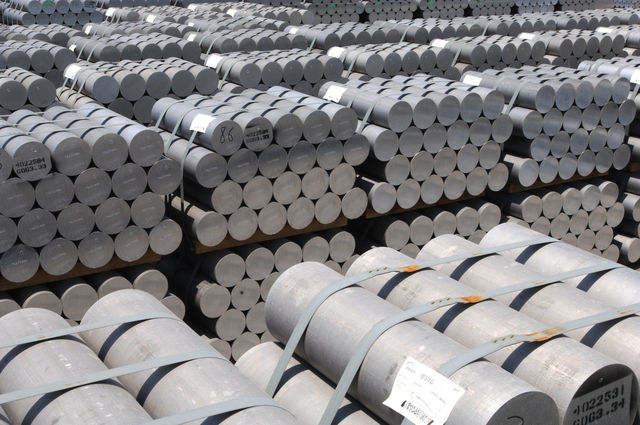Aluminium Bahrain BSC (ALBH) will spend $2.5 billion by 2015 to increase output, betting prices of the metal will rebound from a 30 percent slump in the past year that’s forcing U.S. and European rivals to shutter plants.

“Prices reflect the balance of supply and demand in the short-term but they will come back to normal,” Chief Executive Officer Laurent Schmitt said in an interview on June 5.
Alba, as the company is known, plans to invest the money on adding a potline to produce 400,000 metric tons a year, boosting total capacity by about 30 percent to 1.3 million tons, Schmitt said. It will also include power generation for the development.
The producer is seeking to begin a feasibility study before the end of the year and is in discussions with the Bahraini government over allocating energy to the development, he said.
Alba is among Middle East producers able to rely on cheap energy to buck a global trend of shrinking output of the metal. Emirates Aluminium Co., or Emal, plans to invest $4.6 billion to expand its capacity to 1.4 million tons a year by 2014, while Saudi Arabian Mining Co.’s $10.8 billion venture with Alcoa Inc. includes building a 740,000 ton-a-year smelter by 2013.
Norsk Hydro ASA (NHY), Europe’s third-largest aluminum producer, said this week it would close a smelter in Australia, Alcoa plans to shut older sites, and United Co. Rusal, the biggest producer, is studying curbs on smelting in the second half.
“The Gulf isn’t losing its advantage in terms of low-cost energy” even as U.S. gas prices fall, said Schmitt, who worked for 15 years at Pechiney SA, a French aluminum producer.
Prices Decline
Aluminum prices have declined 30 percent from a high of $2,803 a ton on May 3, 2011, to as low as $1,973.75 today in London trading as world economic growth weakens.
“Prices in the second-quarter will be low,” Schmitt said in Manama, Bahrain. “$2,500 a ton would reflect the long-term supply-demand balance and the value of this material.”
Falling U.S. gas prices after the development of shale gas technology that boosts output have cut energy costs for some smelters. Natural-gas futures are down 20 percent this year, even after rising 26 percent from a 10-year low on April 19.
Futures for July declined by 1.1 percent to $2.394 a million British thermal units by 1:22 p.m. in Dubai.
Schmitt, who says Alba’s production costs put it among the lowest quartile of aluminum companies, sees U.S. gas prices rising to $5.5 in 2015. In comparison, Bahrain increased natural-gas prices to $2.25 this year from $1.50 a unit.
Alba’s funding plan is similar to prior expansions, mostly using bank loans and export credit agencies, Schmitt said. Half of its output is used by Bahrain’s downstream industry, he said.
It plans “some sort of upstream integration” in the long- term by investing in bauxite mines or alumina refining, he said.
Alba contributes 65 percent of non-oil related exports and 10,000 jobs, with Asia and Europe each taking 15 percent, Saudi Arabia 10 percent and the rest of the Middle East the same.
